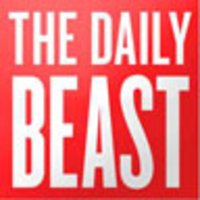During the research for my book on humor in the Third Reich, I found an astonishing source: A book of anti-Nazi caricatures, published in Germany after Hitler's takeover in 1933. At a time when the Nazis were quickly dismantling the republic and sending their opponents to Dachau, this seemed a rather unlikely publication. What deepened the mystery is that Hitler in the World's Caricatures was published by Hitler's personal press secretary, Ernst "Putzi" Hanfstaengl. It appears that the Nazis were worried about being seen as thick-headed thugs and were trying to send out the message to the German public that they weren't as fearsome as their reputation. Hanfstaengl even encouraged the readers to laugh, but not because the caricatures were so good. He wrote:
The mocking, distorted images used by a degenerate press to depict Adolf Hitler as he fulfills his historic mission are reminiscent of cacophonous jazz music. The nay-sayers and defamers are shamefully unmasked by their own works…The value of this compilation of caricatures of the Führer resides in the fact that they, more than any other opposing voices, argue for him. Every image reveals how wrongly the world has seen and judged Adolf Hitler. Those who study the book attentively will get a good laugh at every picture, not because the caricaturists are so witty, but because they have gotten things so obviously wrong.

To ensure that readers laughed at the right things for the right reasons, Hanfstaengel added propagandistic glosses to the caricatures. Next to a picture that showed Hitler as the grim leader of a ghostly army, he wrote that the "Führer" was actually a pacifist. And next to another caricature of Hitler brandishing bloody scalps, he wrote that in real life the "Führer" generously spared the German people any kind of open bloodshed—by opening concentration camps.
The only other anti-Nazi caricatures to appear during the Third Reich were those that were published abroad. In the U.S., the famous author Dr. Seuss rallied reluctant Americans behind the war effort. One of the most poignant and shocking ones was that of the faces of Hitler and the Japanese emperor chiseled into Mt. Rushmore, replacing the American presidents. Similarly, Donald Duck spelled out to Americans what it meant to live under Nazi Rule. In the cartoon film Der Fuhrer's Face (1943), Donald toils in a German armament factory while Goebbels' propaganda alternatively shouts abuse at him through giant speakers and then tells Donald how "wonderful" his life is in Nazi-land. In the end, Donald wakes up in a cold sweat, realizing that a menacing shadow of Hitler above his bed was in fact the Statue of Liberty and that he is at home in his house in America.
In Nazi Germany, oppositional caricaturists were in no position to create such fanciful stories and images. They were persecuted.

In Britain, the brothers Philip and Robert Spence published a mock version of the German children's classic Shock-headed Peter which they called StruwwelHitler, written by a mysterious author called Dr. Schrecklichkeit. The book, published in 1941, mimics the educational tone of the original. The reader encounters "little poison-pen Gobby," a naughty boy who keeps on writing bare-faced lies. In spite of his mother's warnings, he scribbles: "Winston's taking pains to batter out the Führer's brains." As in the original children's book, the story ends with Gobby (i.e. Goebbels) receiving his just punishment: having his thumbs cut off with giant shears.

In Nazi Germany, oppositional caricaturists were in no position to create such fanciful stories and images. They were persecuted. A leading anti-Nazi artist, Erich Ohser, had published a drawing of a man urinating a swastika into the snow. Ohser's courage would not go unpunished. After Hitler's assumption of power, his application for membership in the Chamber of Culture was rejected which meant that he wasn't allowed to work anymore. Gritting his teeth, Ohser adapted to the times, at least externally, and began publishing apolitical cartoons under the pseudonym E.O. Plauen. His series Father and Son enjoyed enormous popularity, and that opened doors to the newspaper, Das Reich, which was considered relatively liberal. There, he sold a number of political caricatures that were careful not to overstep Nazi lines. Ohser drew anti-British and anti-Soviet caricatures, but in his private life, he made no secret of his real political convictions. In the next-to-last year of World War II, that became his undoing. A neighbour reported anti-Nazi remarks made in a conversation between Ohser and his friend Erich Knauf, and the two men were hauled up in front of the notorious People's Court. Ohser committed suicide before the trial, while Knauf was executed in May 1944.
Plus: Check out Book Beast for more news on hot titles and authors and excerpts from the latest books.
As a director, Rudolph Herzog is best known for the crime series The Heist , which aired on Channel 4 (U.K.) and was called “riveting” by The Daily Telegraph. His documentary on humor in the Third Reich, Laughing With Hitler , scored top audience ratings on German Channel 1 and was also broadcast in English translation on the BBC. He is the son of the celebrated filmmaker Werner Herzog. He lives in Berlin.






